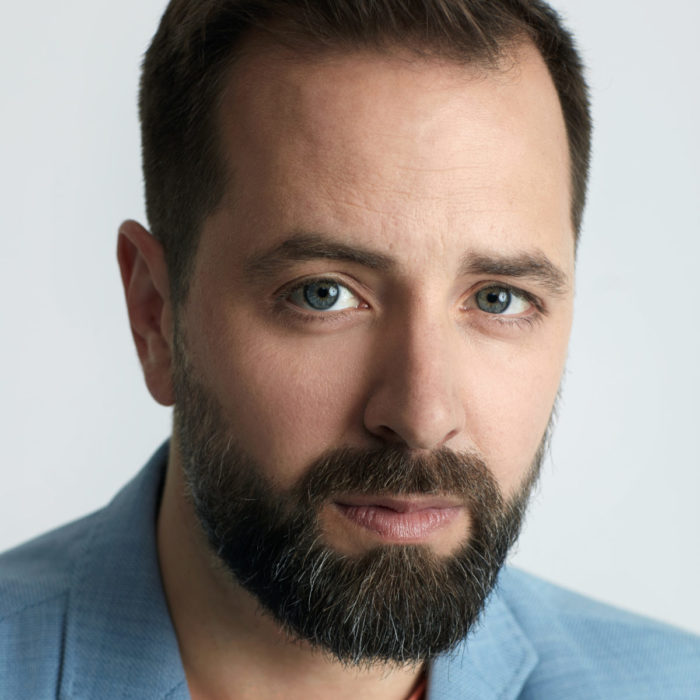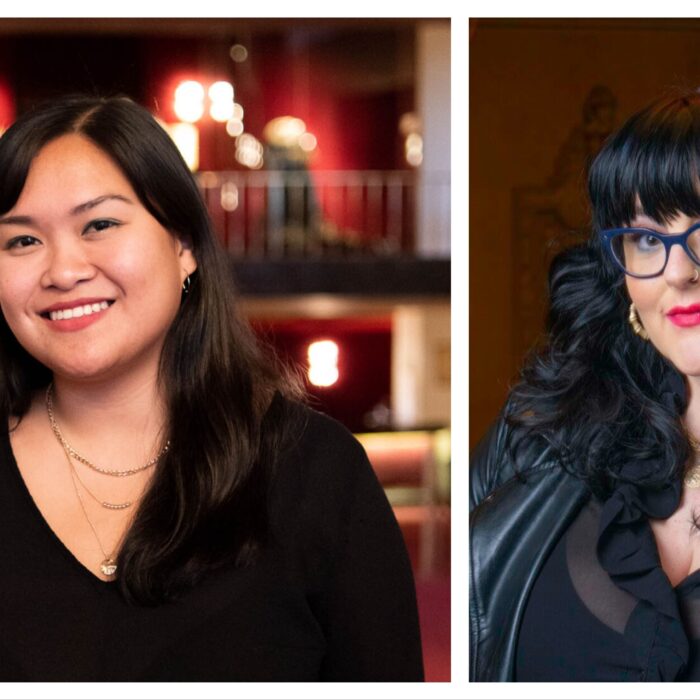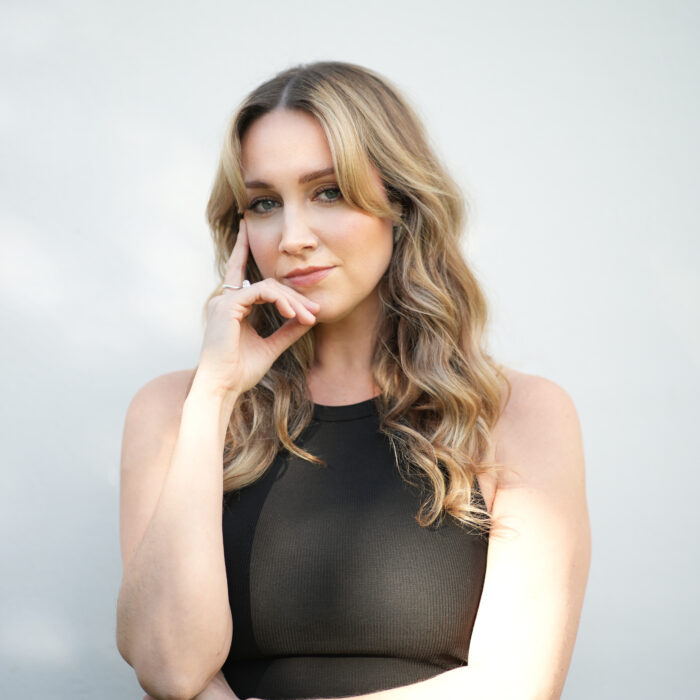
Interview: Soprano & Conductor Amy Owens’ Infinitely Curious & Joyful Journey
By Chris RuelAmy Owens is the true definition of renaissance artist.
As a coloratura soprano, she gravitates more to recitals and concert operas rather than staged productions. She released an electronic pop album this summer, right before attending the Linda and Mitch Hart Dallas Institute for Women Conductors. Just for the fun of it, Owens took on rare (and more difficult) version of a famous Strauss aria. And most recently, she recorded an album of Bernstein’s music set for release this coming April. She also plays a mean accordion.
Owens is all about going with the flow. The current she rides has brought her success on multiple levels. And, while she takes every project seriously, driven by a desire to leave her mark across the musical world, she never forgets to find joy in the journey — something her mother taught her from a young age.
Infinite and Ethereal
“I just love music!” Owens declared with a radiant smile before she dove into some philosophical musing on the nature of music during a recent interview with OperaWire. “With music, there’s no destination. There’s no X on the treasure map. The journey of music is the most joyful thing in my life.
“Music is both ethereal and infinite at the same time. When you go to a live concert, you experience music; it comes alive for a brief time, and then it disappears. That is the ethereal quality. But music is an art that can be discovered over and over, and that makes it infinite. There’s so much to find, even if I’ve performed or heard a piece many times over.”
Whether it’s about music or life, one thing is clear when speaking with Owens; her curiosity seems boundless. The word itself was a leitmotif that surfaced again and again as she explained how she grows more in love with music on a daily basis, the art acting as a magnet to which she is increasingly drawn. A look at her most recent projects demonstrates Owens’ refusal to be hemmed in by expectations of what an opera singer should do.
“Why limit yourself to one form of music?” She asked, truly wondering why anything should be considered out of bounds for classically trained artists. “Music is music, but we try to put it into boxes. I don’t want to leave out all other forms of music and traditions because I’m an opera singer. I understand that we, as people, like to categorize things, but with music, I don’t believe things need to be so clear cut.”
POPera
The summer of 2018 saw the release of “HAETHOR,” an album where opera met electronic pop. The singer collaborated with producer Howard “Merlin” Wulkan to create a “genre-bending” recording.
Wulkan introduced himself to Owens after a performance of “Carmina Burana” with the New Mexico Philharmonic and then he followed up with an email to express the intense impact the performance had on him. Owens’s “infinite curiosity” won out and she researched Wulkan, discovering that he was a producer. From there the conversation kicked into gear and the duo was on its way toward a new project.
“What fascinated me about the project was that there was almost no overlap between our musical experiences. For me, the question wasn’t, why should we do this? It was, why shouldn’t we do this,” she noted.
But something didn’t quite work as they expected.
“HAETHOR wasn’t authentically reaching people. I thought I was singing in a pop style, but the fact that I’m an opera singer isn’t easily disguised. It’s more honest to totally own who I am and let the album be an extension.”
The duo will now re-release the album under Owens’ name.
Owens the Maestro
This past fall, Owens attended the Linda and Mitch Hart Institute for Women Conductors at The Dallas Opera. Founded in 2015, the Institute is one of only three programs in the world dedicated to women conductors, making acceptance into the program a profound accomplishment.
Owens was one of four professionals invited as observers. In addition to the observers, six conductors and two administrators rounded out the Institute’s class of 2018. Owens acknowledges the impact the Institute has had in the industry, but she admits that it will take time for more women to make their way onto the podium, and addressed challenges women face in a male-dominated field.
“When a woman is on the podium some people are judging their physical appearance, what they’re wearing, and their femininity, among other things. Unfortunately, these things happen,” she noted. “We have to be clear as women; otherwise it’s just too hard. There are so many more things a woman needs to overcome to be respected in leadership positions. Unless you’re fully yourself and owning it, you can’t be an effective leader.
She noted that in her view, one such conductor who understands and owns what she does is JoAnn Falletta, one of her idols.
“She’s incredibly clear and confident in herself, and she hasn’t given up her femininity. She demonstrates that there is no weakness in being feminine.”
Zerbinetta à la 1912
On the opera front, Owens has engaged with equally unique projects, including reviving and championing an older version of Zerbinetta’s aria, “Großmächtige Prinzessin” from “Ariadne auf Naxos.”
There are two versions of Strauss’ “Ariadne auf Naxos.” The first of these, completed in 1912, featured a stage play and an opera. The play, an adaptation of Molière’s “Le Bourgeois Gentilhomme” opened the show, followed by a 90-minute opera (The entire production lasted a Wagnerian six hours). The idea was radical, and it crashed and burned. The audience didn’t know what to make of it.
For the “Ariadne” re-boot, Strauss nixed the play and stuck with the opera, but added a Prologue harvested from a scene found in the 1912 version’s stage play. The new “Ariadne” premiered in Vienna in 1916 and was a success.
Yet, the differences between the first and second iterations of Strauss’ work also include the composer’s tinkering with Zerbinetta’s aria, “Großmächtige Prinzessin.” The composer took the coloratura showcase aria down a full step from the 1912 stratosphere and cut about five minutes of music.
But Owens thought why settle for high E’s and roughly 10-minutes of high-wire acrobatics when you can have the fun of two F-sharps throughout nearly 15 minutes of continuous singing—save for an eight-bar break in the action for some solo piano. When she says she did it for fun, she means it even though it required hundreds of practice hours.
“I had a couple orchestras ask me if there was anything I wanted to do. So, I looked at the 1912 Zerbinetta not knowing if I’d ever sung a high F-sharp before,” Owens related.
But it’s not just about the high notes. The piece’s extra length is challenging because it simply means there are more harmonic shifts to focus on, something that is often the most challenging aspect of Strauss’ music.
“It’s like an ear training exercise,” she explained. “With Strauss, you’re shifting harmonies all the time, and so you have to know where your landing points are before you get to them. At the same time, you’re adjusting your tuning as you go. I spent a lot of time alone, and with coaches, finding those landing points.”
Owens’ next performance of the aria will be at the George London Recital on March 24th.
A Cornucopia of Style
What’s next? Owens has just finished recording a full album diving into the works of someone she refers to as “the consummate exploratory musician,” Leonard Bernstein.
The new album, which she did with tenor Michael Barrett, features some unpublished and never-before-recorded works that span a range of styles, including jazzy tunes, musical theater, opera, and art songs.
So once more, Owens is smashing the neat boxes into which music is dropped, riding the current where it takes her, and flat out going for it like the high F-sharps she sings in the 1912 Zerbinetta.
“Going for it means you’re not going to be perfect all the time. Perfectionism is something that is rooted in fear, and my curiosity will always win out over fear.
Curiosity can’t coexist with fear.”


